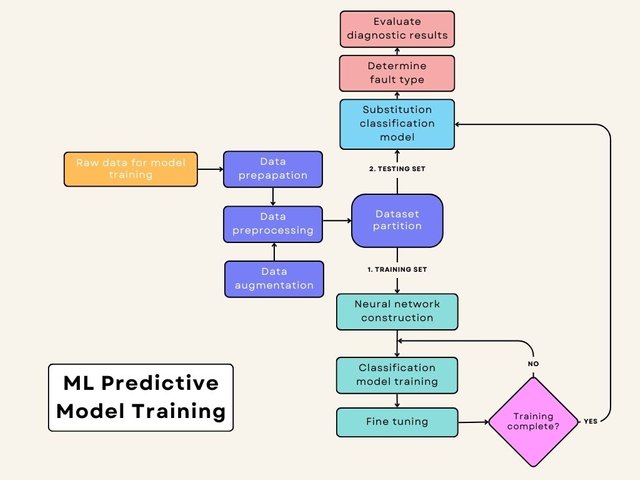How Machine Learning Advances Predictive Modeling and Forecasting

Predictive modeling and forecasting involve using statistical techniques and algorithms to predict future outcomes based on historical data. These methods are pivotal in various sectors, including finance, healthcare, and climate science, enabling informed decision-making and strategic planning. Let's see how machine learning can facilitate effective modeling in different industries.
Machine learning (ML), a subset of artificial intelligence (AI), comprises algorithms that learn from and make predictions based on data. Unlike traditional programming, where specific instructions dictate outcomes, ML models identify patterns and relationships within data to generate predictions, continuously improving their performance over time.
Importance of ML in Modern Predictive Modeling
The integration of ML in predictive modeling marks a significant evolution, offering enhanced accuracy, efficiency, and the ability to handle complex, non-linear relationships. As data volumes grow exponentially, ML's capacity to process and analyze large datasets becomes indispensable, driving advancements across industries.
Basics of Predictive Modeling
Traditional Predictive Modeling Techniques
Statistical Methods: Traditional techniques include regression analysis, time series analysis, and econometric models, which rely on statistical principles to establish relationships between variables.
Historical Data Analysis: This involves examining past data to identify trends and patterns, providing a basis for forecasting future events.
Limitations of Traditional Methods
- Many traditional methods assume linear relationships, which may not capture the true complexity of real-world data.
- Handling vast amounts of data efficiently poses a challenge for traditional techniques.
- Traditional methods often struggle with non-linear and complex relationships, limiting their predictive power.
And This is Where ML Comes in Place
Key Concepts of Machine Learning
Algorithms and Models: ML involves a range of algorithms, such as decision trees, support vector machines, and neural networks, which form the basis of predictive models.
Supervised vs. Unsupervised Learning: Supervised learning uses labeled data to train models, while unsupervised learning finds patterns in unlabeled data, each serving distinct purposes in predictive modeling.

Types of Machine Learning Models
Regression Models: These predict continuous outcomes, such as stock prices or sales figures.
Classification Models: These categorize data into discrete classes, such as spam detection in emails.
Clustering Models: These group data points into clusters based on similarity, useful in customer segmentation.
How Machine Learning Enhances Predictive Modeling
Improved Accuracy
- ML models can process extensive datasets, uncovering intricate patterns and improving prediction accuracy.
- ML automates the identification and selection of relevant features, enhancing model performance.
Non-Linear Relationships
- ML models excel at recognizing non-linear relationships within data, providing more nuanced predictions.
- Neural Networks and Deep Learning models mimic the human brain, effectively capturing complex, non-linear patterns in data.
Real-Time Predictions
- ML models can update in real-time as new data arrives, ensuring predictions remain current.
- Adaptive algorithms adjust to changing data patterns, maintaining predictive accuracy over time.
Automation and Efficiency
- ML streamlines the model-building process, reducing the time and expertise required.
- Automated tuning of model parameters optimizes performance, making ML models more effective.
Industries That Benefit From ML Predictive Modeling
Business Forecasting
Sales and Demand Forecasting: ML models predict future sales and demand trends, aiding inventory and supply chain management.
Customer Behavior Analysis: Analyzing customer data helps businesses tailor marketing strategies and improve customer retention.
Healthcare Predictions
Disease Outbreak Predictions: ML models forecast disease outbreaks, enabling proactive public health measures.
Patient Outcome Predictions: Predicting patient outcomes assists in personalized treatment plans and resource allocation.
Financial Market Analysis
Stock Market Predictions: ML models analyze market trends and indicators, supporting investment decisions.
Credit Scoring: ML enhances credit scoring accuracy by considering a broader range of variables and complex relationships.
Not a Magic Pill: Considerations of Using ML
Data Quality and Preprocessing
Ensuring high-quality data and effective preprocessing is crucial for accurate ML models, as poor data can lead to misleading predictions.
Model Interpretability
- Many ML models operate as black boxes, making it difficult to understand how predictions are made.
- XAI aims to make ML models more transparent and interpretable, fostering trust and accountability.
Ethical and Privacy Concerns
- Protecting sensitive data is paramount to prevent breaches and misuse.
- Addressing biases in ML models ensures fair and equitable outcomes, avoiding discrimination.
Scalability and Infrastructure
- ML models require significant computational power, often necessitating specialized hardware.
- Leveraging cloud computing resources facilitates scalable and efficient ML model deployment.
Future Trends in Machine Learning for Predictive Modeling
1. Integration with Other Technologies
Internet of Things (IoT): Combining ML with IoT devices enhances data collection and real-time analytics.
Big Data Analytics: Integrating ML with big data technologies improves the ability to analyze vast datasets efficiently.
Advances in Algorithms
Reinforcement Learning: This area focuses on training models through trial and error, optimizing decision-making processes.
Transfer Learning: This technique applies knowledge from one domain to another, reducing the need for extensive training data.
Democratization of ML Tools
The increasing accessibility of ML tools empowers a broader range of users to leverage these technologies, fostering innovation and adoption.
To Sum Up
Machine learning significantly enhances predictive modeling by improving accuracy, handling complex patterns, and enabling real-time predictions.
As data continues to proliferate, ML's role in predictive modeling becomes increasingly vital across various industries, driving innovation and efficiency.
The future of predictive modeling lies in the continued integration of ML with emerging technologies, the advancement of algorithms, and the evolution of explainable AI, ensuring ethical and effective applications.
Sources:
https://www.researchgate.net/publication/380068475_A_review_of_the_use_of_machine_learning_in_predictive_analytics_for_patient_health_outcomes_in_pharmacy_practice
https://www.mdpi.com/2078-2489/14/11/598
https://www.coherentsolutions.com/insights/ai-in-financial-modeling-and-forecasting
https://www.mckinsey.com/capabilities/strategy-and-corporate-finance/our-insights/predictive-sales-forecasting-is-your-finance-function-up-to-code
https://www.intel.com/content/www/us/en/healthcare-it/predictive-analytics.html